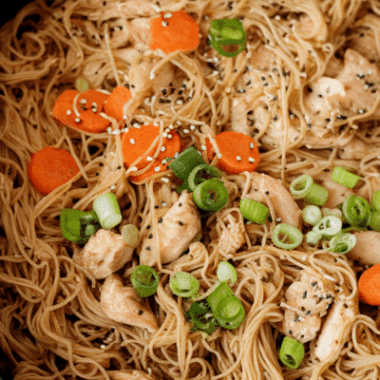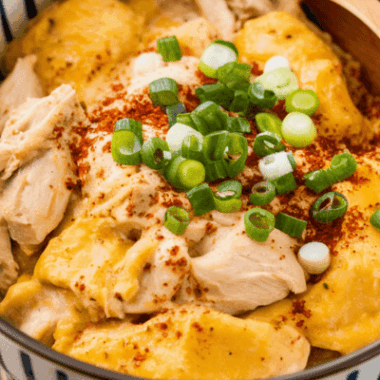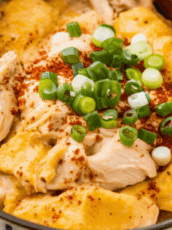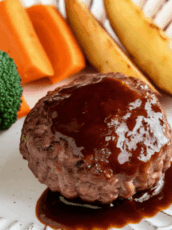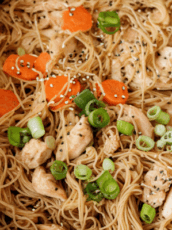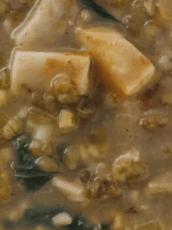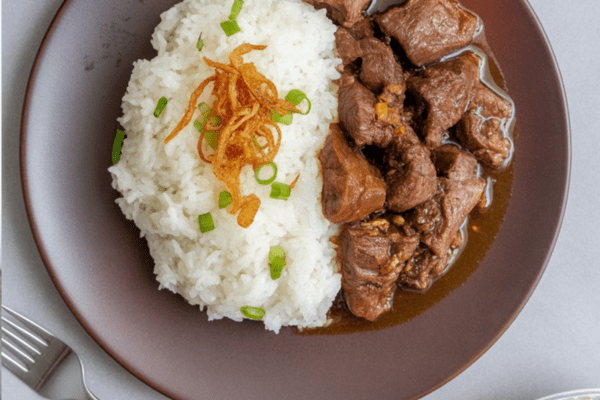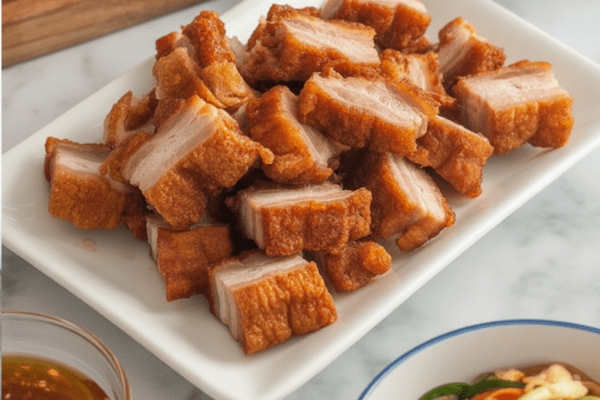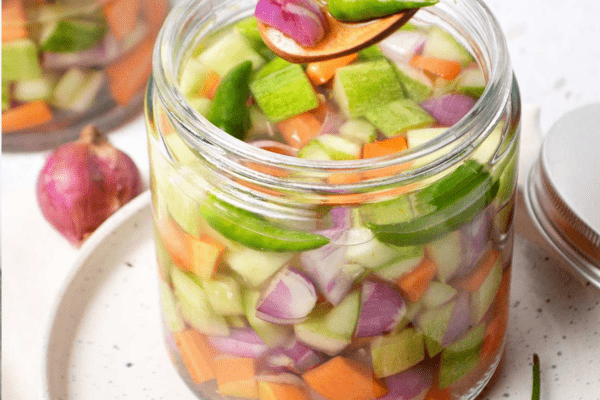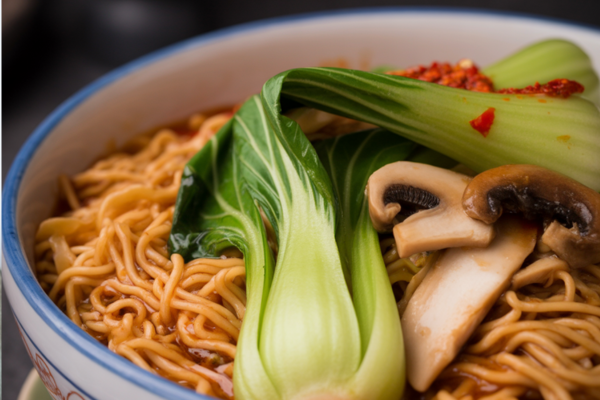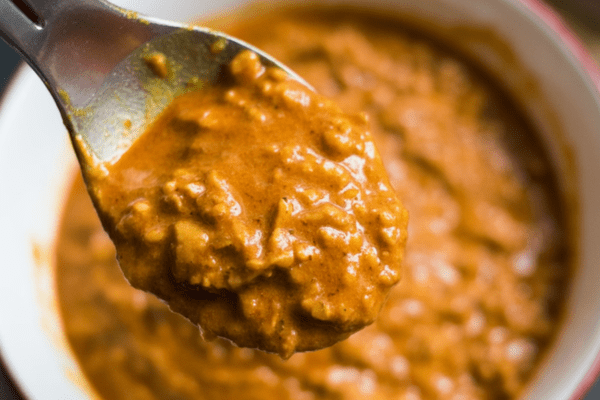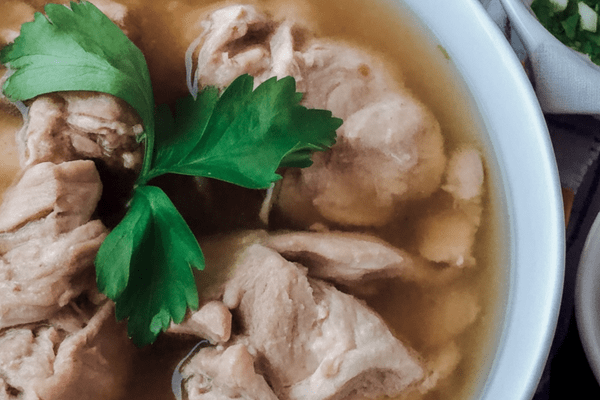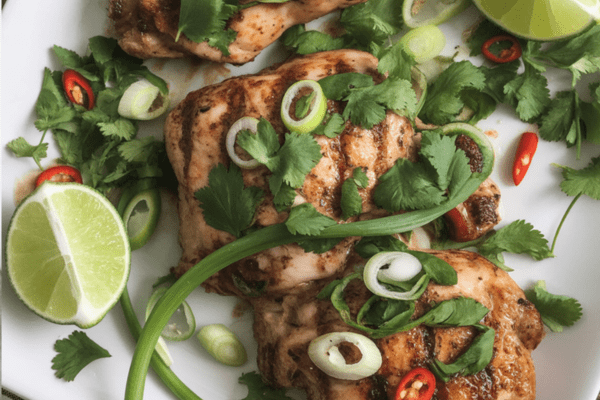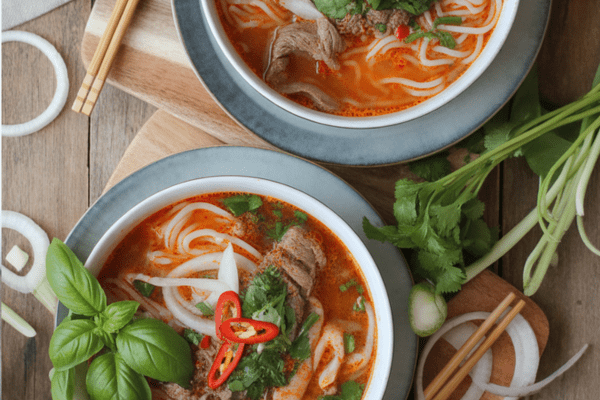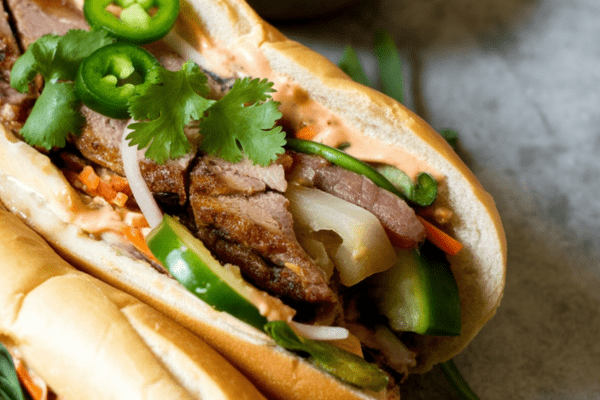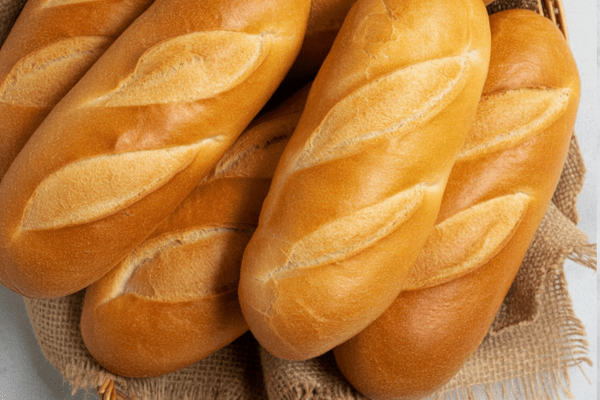I’ve got a real soft spot for Japanese-style hamburger steaks—Hambagu. They’re tender, juicy, and packed with so much flavor that you’ll want to make them part of your regular dinner rotation. I love serving them with a rich red wine sauce, which soaks beautifully into rice or potatoes. It’s the kind of meal that feels special without being fussy.
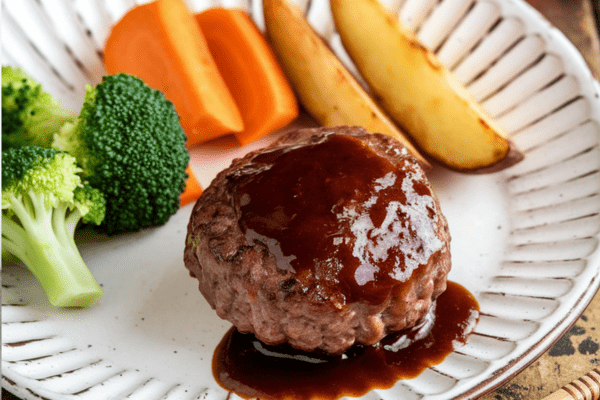
I often cook these on a lazy weekend, when I have time to slow down in the kitchen and enjoy the process. I remember making them for friends one evening—they were amazed by how “fancy” they looked, but really it’s all about simple, good ingredients and a bit of patience.
What Makes Hambagu Special
If you’ve never tried Hambagu before, think of it as Japan’s take on a hamburger steak—served without a bun, but with all the savory goodness you’d expect. It’s a beloved dish in Japanese homes and is often served at yoshoku-style restaurants that put a Japanese spin on Western classics.
Unlike American burgers or Salisbury steak, these are typically served over rice with sauce and vegetables. I’ve always loved that contrast: the Western idea of a hamburger transformed with Japanese ingredients and presentation. It’s a dish that really highlights how homey and comforting Japanese cooking can be.
Different Ways to Make It Your Own
One of my favorite things about Hambagu is how flexible it is. There are endless variations in Japan:
- Wafu Hambagu with a light soy-based sauce and grated daikon for a fresh bite.
- Teriyaki Hambagu for that sweet-savory caramelized glaze.
- Demi-glace Hambagu for a richer, Western-style sauce.
I’ve even added sautéed mushrooms or a fried egg on top to make it feel extra special. The recipe I’m sharing here is a classic version with a lovely homemade wine reduction sauce—simple enough for any night, but worthy of a small celebration.
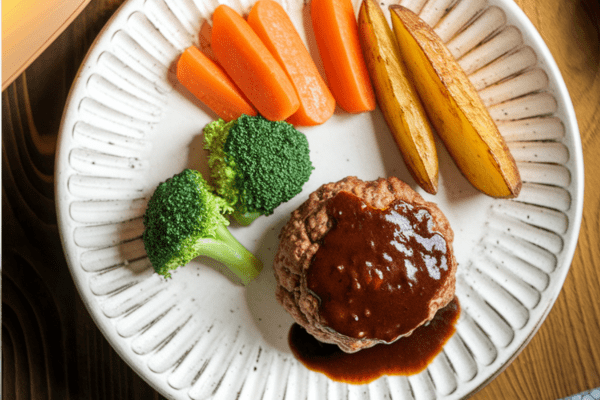
Using a Mix of Beef and Pork
In Japan, it’s common to use a blend of ground beef and ground pork, which you can often buy pre-mixed at the store. At home, I usually mix them myself. I find the pork adds a subtle sweetness and makes the patty extra juicy.
A typical ratio is about 2:1 beef to pork. Feel free to adjust depending on what you like. Sometimes I’ll use a bit more pork if I want it softer, or lean more on beef if I want a deeper flavor.
I use this same mix for things like Menchi Katsu (deep-fried ground meat cutlets), spaghetti sauce, and even curry rice gratin. It’s a real staple in my kitchen.
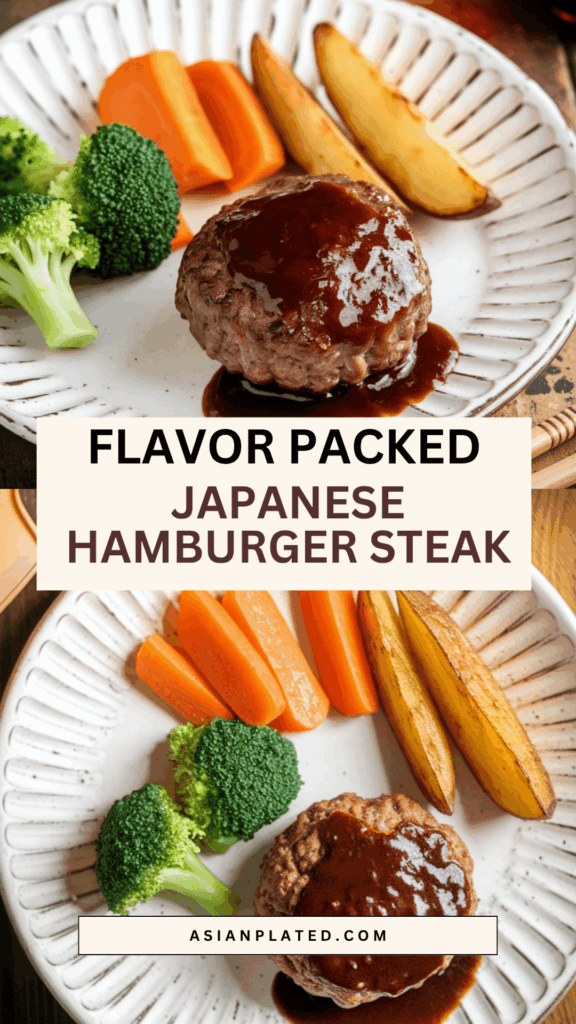
My Best Tips for Perfect Hambagu
I learned a lot of these little tricks the hard way, and they really make the difference between “good” and “wow”:
- Cook the onions slowly and let them cool. This step can seem boring, but it brings out natural sweetness without burning. I usually make them first so they’re completely cool by the time I’m ready to mix.
- Knead the meat well. Don’t just mix it lightly—get in there with your hands until it’s pale and sticky. That texture is the secret to a cohesive patty that doesn’t fall apart.
- Toss the mixture back and forth. Sounds silly, but this removes air pockets and stops the patty from cracking when you cook it. I do this a few times before shaping them.
- Chill the patties. Letting them rest in the fridge for 20–30 minutes helps the fat solidify so they hold their shape better. I usually use this time to prep my sides.
- Indent the center. Using your fingers to press a little dip in the middle prevents it from puffing up too much. It evens out during cooking.
- Deglaze with wine or stock. I love using red wine here, but if I’m cooking for kids or anyone avoiding alcohol, a good beef or chicken stock works perfectly. That steam helps cook them gently and adds loads of flavor.
- Make the sauce in the same pan. All those delicious bits in the pan get reincorporated into the sauce. It’s my favorite part. I’m always scraping up every last bit.
I even keep those little single-serve wine bottles on hand so I don’t have to open a whole bottle for cooking. They’re lifesavers for recipes like this.
Japanese Hamburger Steak

Juicy, tender, and bursting with umami, this Japanese-style hamburger steak is a weeknight dinner winner. Served with a glossy red wine sauce, it's comfort food with a touch of elegance. Whether you pan-fry it indoors or grill it outside, this recipe guarantees a satisfying bite every time.
Ingredients
For the Patties:
- ⅓ cup panko breadcrumbs
- 2 Tbsp milk
- ½ tsp nutmeg
- ¾ lb ground beef and pork mix (2:1 or 3:1 ratio works great)
- ½ tsp kosher salt
- Freshly cracked black pepper
- 1 large egg
- ½ onion, finely minced
- 1 Tbsp neutral oil (for sautéing onion)
For Cooking:
- 1 Tbsp neutral oil
- 3 Tbsp red wine (or beef/chicken stock)
For the Sauce:
- 1 Tbsp unsalted butter
- 3 Tbsp ketchup
- 3 Tbsp tonkatsu sauce (or substitute with a mix of Worcestershire and sugar)
- 3 Tbsp red wine (or stock)
- 3 Tbsp water
Instructions
Make the Patties:
- Begin by finely chopping the onion until it’s nearly minced. Sauté it in a pan with 1 Tbsp of oil over medium heat until soft and translucent. Set aside to cool.
- In a large mixing bowl, combine the ground meat blend with salt, pepper, nutmeg, panko, milk, egg, and the cooled onions.
- Mix thoroughly using a spatula at first, then knead with your hands until the mixture becomes slightly sticky and paler in color—this helps bind everything together.
- Divide the mixture into 4 equal portions. Shape each into an oval patty, then gently toss each one between your hands a few times to remove any trapped air. This keeps the patties from cracking as they cook.
- Place the shaped patties on a tray, cover them with plastic wrap, and refrigerate for at least 30 minutes. This rest time helps the flavors meld and keeps the fat firm before cooking.
Cook the Steaks:
- Heat a pan over medium and add 1 Tbsp oil. Carefully place the patties in the pan, pressing the center of each slightly with your fingers to help them cook evenly.
- Let them sear undisturbed for about 3 minutes per side until both sides have a nice crust.
- Pour in 3 Tbsp of red wine (or stock), cover the pan, and reduce the heat to low. Steam the patties for 5–7 minutes until fully cooked. A skewer inserted should release clear juices.
- Remove the patties from the pan and set aside on plates. Keep the pan as is—you'll use it for the sauce.
Make the Sauce:
- In the same pan with all the savory juices, melt the butter over medium heat.
- Stir in ketchup, tonkatsu sauce, red wine, and water. Bring the mixture to a simmer and let it cook down until it thickens slightly. You should be able to draw a line through the sauce with a spatula.
- Drizzle a generous spoonful over each hamburger steak and pour the rest into a small serving bowl.
Notes
- Pair with fluffy white rice, sautéed veggies like carrots or broccoli, and a bowl of miso soup for a comforting Japanese-style meal. It also goes beautifully with potato salad or creamy corn soup.
Nutrition Information:
Yield: 4 Serving Size: 1Amount Per Serving: Calories: 509Total Fat: 31gSaturated Fat: 10gTrans Fat: 1gUnsaturated Fat: 18gCholesterol: 160mgSodium: 627mgCarbohydrates: 17gFiber: 1gSugar: 6gProtein: 34g
Asianplated.com, occasionally offers nutritional information for recipes contained on this site. This information is provided as a courtesy and is an estimate only. This information comes from online calculators. Although allchickenrecipes.com attempts to provide accurate nutritional information, these figures are only estimates.
How I Like to Serve It
For me, the ideal plate of Hambagu includes:
- Crispy oven-roasted potato wedges
- Steamed broccoli and sautéed carrots
- A generous spoonful of that wine sauce over everything
If I want to go full Japanese-style, I’ll swap the potatoes for a bowl of fluffy steamed rice and add miso soup on the side.
This is one of those meals that feels restaurant-worthy but is easy enough for a weeknight. It’s also great for a date night at home or just treating yourself. Every time I make it, I’m reminded of why I love cooking: good food, shared with people you care about, always tastes better.
Try other Japanese recipes:

